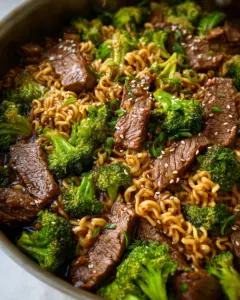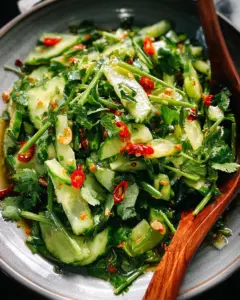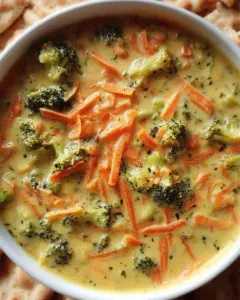Aromatic and flavorful restaurant style Vegetable Biryani! This fragrant biryani is packed with veggies, spices, herbs, and nuts and is an explosion of flavors in every bite! Perfect for family dinners, special occasions, or just a cozy night in, this dish offers a delightful experience that will impress everyone at your table.
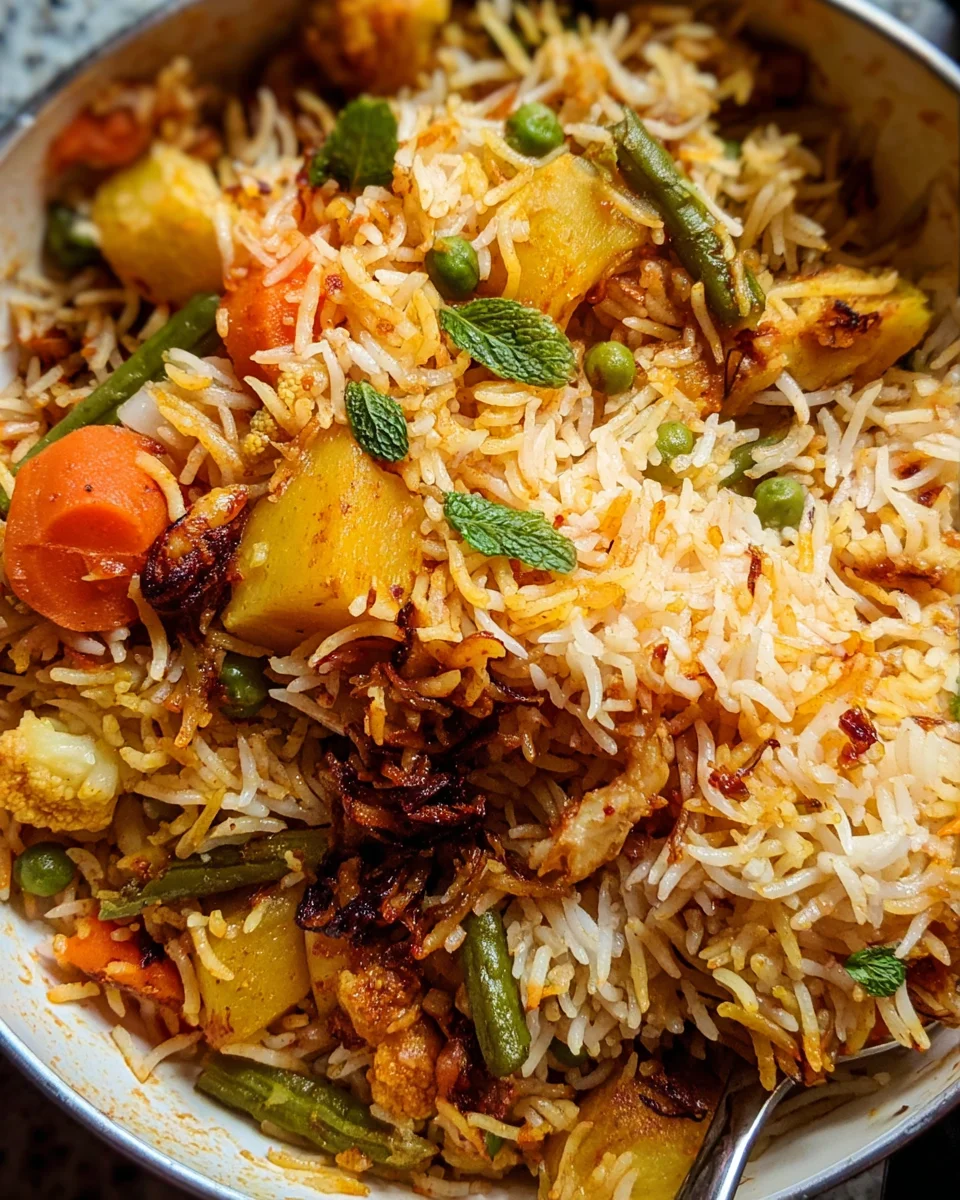
Jump to:
- Why You’ll Love This Recipe
- Tools and Preparation
- Essential Tools and Equipment
- Importance of Each Tool
- Ingredients
- How to Make Restaurant Style Vegetable Biryani
- Step 1: Prepare the Rice
- Step 2: Sauté the Aromatics
- Step 3: Cook the Vegetables
- Step 4: Layering Ingredients
- Step 5: Add Rice and Cook
- Step 6: Final Cooking Steps
- How to Serve Restaurant Style Vegetable Biryani
- With Raita
- With Salad
- With Pickles
- With Papad
- How to Perfect Restaurant Style Vegetable Biryani
- Best Side Dishes for Restaurant Style Vegetable Biryani
- Common Mistakes to Avoid
- Storage & Reheating Instructions
- Refrigerator Storage
- Freezing Restaurant Style Vegetable Biryani
- Reheating Restaurant Style Vegetable Biryani
- Frequently Asked Questions
- How do I make Restaurant Style Vegetable Biryani vegetarian?
- Can I use brown rice instead of basmati?
- What vegetables work best in Restaurant Style Vegetable Biryani?
- How do I enhance the flavor of my biryani?
- Final Thoughts
- 📖 Recipe Card
Why You’ll Love This Recipe
- Flavor-Packed Delight: The combination of spices and fresh ingredients creates a deliciously aromatic dish that tantalizes the taste buds.
- Perfect for Any Occasion: Whether it’s a festive celebration or a casual family meal, this biryani suits all events effortlessly.
- Easy to Prepare: With clear steps and common ingredients, making this restaurant style Vegetable Biryani is a breeze.
- Customizable Ingredients: Feel free to add your favorite veggies or nuts to make it uniquely yours!
- One-Pot Wonder: Simplify cleanup with this one-pot recipe that combines everything into one flavorful dish.
Tools and Preparation
Before you start cooking, gather your tools. Having the right equipment makes the preparation smoother.
Essential Tools and Equipment
- Heavy-bottomed pot or pressure cooker
- Wooden spatula
- Measuring cups and spoons
- Knife and cutting board
Importance of Each Tool
- Heavy-bottomed pot or pressure cooker: Ensures even cooking and prevents burning, making it ideal for layered dishes like biryani.
- Wooden spatula: Great for stirring without damaging your cookware, helping to mix ingredients gently.
- Measuring cups and spoons: Precise measurements lead to consistent results every time you make this dish.
Ingredients
Ingredients:
– 1 cup basmati rice (200 grams, soaked in 3 cups (24 oz) water for 30 minutes)
– 6 whole green cardamom (divided)
– 4 cloves (divided)
– 1 teaspoon salt (divided)
– 1.5 tablespoon +1 teaspoon ghee (divided)
– 2 medium red onion (thinly sliced, divided)
– 2 tablespoons broken cashews
– 1 small potato (cubed)
– 1/2 cup cauliflower florets (medium sized florets)
– 1 medium carrot (cut diagonally)
– 5-6 green beans (cut diagonally)
– 2 tablespoons milk (30 ml)
– saffron strands (generous pinch)
– 1 inch ginger (crushed)
– 4-5 large garlic cloves (crushed)
– 2 green chilies (crushed)
– 1.5 tablespoons oil (22 ml)
– 1/2 teaspoon cumin seeds (I used shahi jeera)
– 1 inch cinnamon stick
– 1 bay leaf
– 3 whole black peppercorns
– 1/3 cup plain yogurt (whisked and at room temperature; can add 1/4 teaspoon cornstarch and whisk to prevent curdling)
– 1.5 teaspoon biryani masala (or use 1 teaspoon garam masala)
– 1/2 teaspoon kashmiri red chili powder (or use regular chili powder for heat)
– 1/4 cup water
– 2 tablespoons chopped cilantro
– 2 tablespoons chopped mint
– 1.5 teaspoon rose water or kewra water
How to Make Restaurant Style Vegetable Biryani
Step 1: Prepare the Rice
- Rinse the soaked basmati rice under cold water until the water runs clear.
- Drain the rice completely.
Step 2: Sauté the Aromatics
- Heat 1.5 tablespoons of ghee in a heavy-bottomed pot over medium heat.
- Add half of the sliced onions; sauté until golden brown.
- Stir in crushed ginger, garlic, and green chilies; cook until fragrant.
Step 3: Cook the Vegetables
- Add cubed potatoes, cauliflower florets, carrots, and green beans to the pot.
- Sauté for about 5–7 minutes until vegetables are slightly tender.
Step 4: Layering Ingredients
- Mix in cumin seeds, cinnamon stick, bay leaf, black peppercorns, biryani masala, kashmiri red chili powder, salt, and broken cashews.
- Combine well before adding yogurt; mix thoroughly.
Step 5: Add Rice and Cook
- Gently layer the drained rice over the vegetables without stirring too much.
- Pour in water along with saffron-infused milk. Drizzle remaining ghee on top.
Step 6: Final Cooking Steps
- Cover tightly with a lid. Cook on low heat for about 25–30 minutes until rice is fluffy.
- Once done, remove from heat; let it rest for another 10 minutes before serving.
With each step carefully crafted to enhance flavor and texture, your restaurant style Vegetable Biryani will be ready to serve. Enjoy this delightful dish with raita or salad for a complete meal!
How to Serve Restaurant Style Vegetable Biryani
Serving restaurant style Vegetable Biryani is an art that enhances the dining experience. With its vibrant colors and rich flavors, this dish can be complemented by several accompaniments that elevate its taste.
With Raita
- Cucumber Raita: A cooling yogurt-based side with diced cucumbers and spices.
- Onion Raita: Sliced onions mixed with yogurt, perfect for balancing the spiciness of biryani.
With Salad
- Kachumber Salad: A refreshing mix of chopped tomatoes, onions, and cucumbers seasoned with lemon juice.
- Mint Chutney: A zesty dip made from fresh mint leaves, green chilies, and spices.
With Pickles
- Mango Pickle: Tangy and spicy mango pickle adds a burst of flavor.
- Lemon Pickle: A sweet-sour option that pairs well with biryani.
With Papad
- Crispy Papad: Fried or roasted papad adds a delightful crunch to your meal.
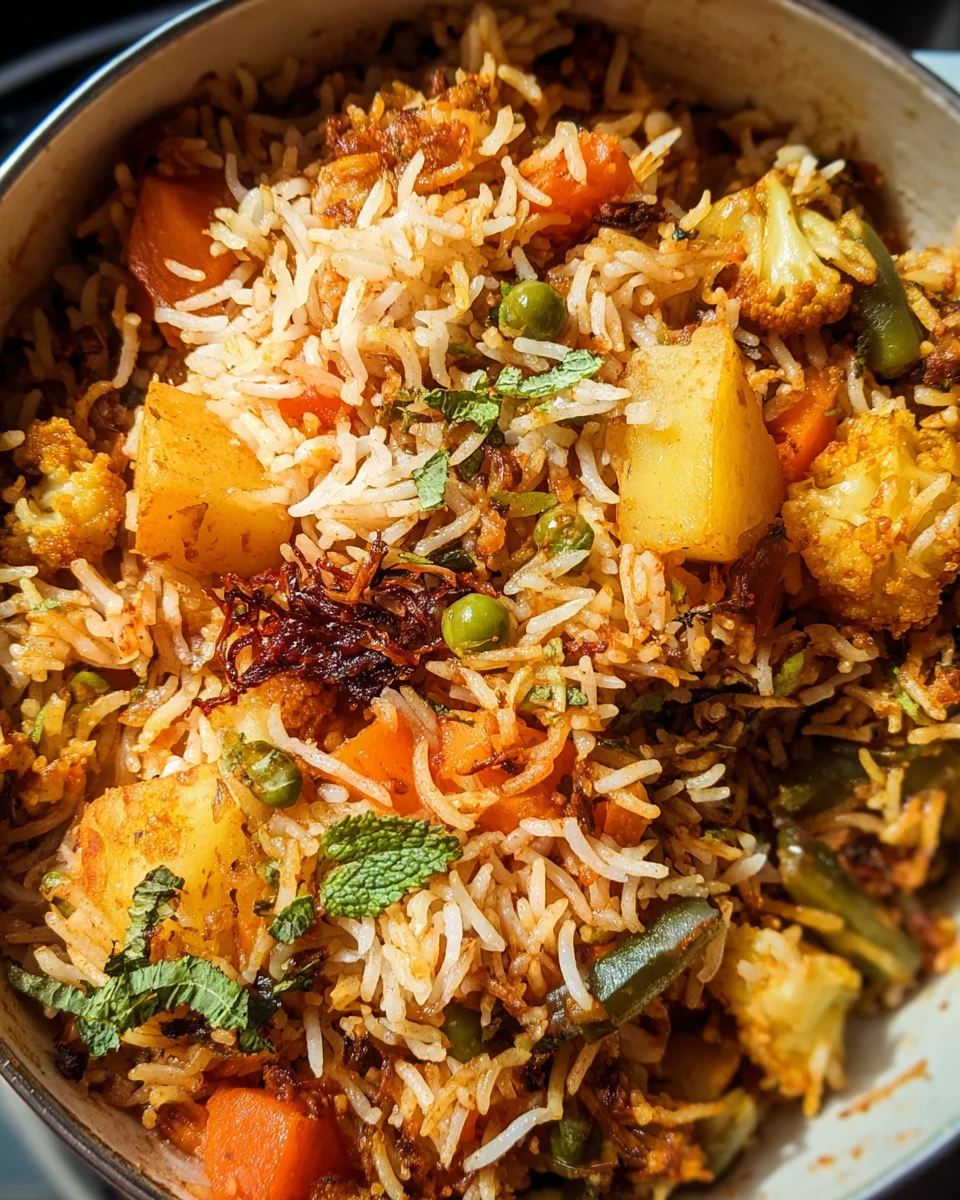
How to Perfect Restaurant Style Vegetable Biryani
Creating the perfect restaurant style Vegetable Biryani requires attention to detail. Here are some tips to ensure your dish turns out delicious every time.
- Use Quality Rice: Opt for aged basmati rice for better texture and aroma.
- Soak the Rice: Soaking the rice helps achieve fluffy grains that don’t stick together.
- Layering Flavors: Add spices at different stages for a more complex flavor profile.
- Low Flame Cooking: Cook on low heat towards the end to allow flavors to meld without overcooking.
- Resting Time: Let the biryani rest after cooking; this helps in enhancing the flavors further.
- Garnish Generously: Use fresh herbs like cilantro and mint for a vibrant finish.
Best Side Dishes for Restaurant Style Vegetable Biryani
Pairing side dishes with your restaurant style Vegetable Biryani can create a balanced meal. Here are some excellent options to consider.
- Cucumber Raita: This cooling yogurt dish complements the spices in biryani beautifully.
- Kachumber Salad: A fresh salad that provides crunch and acidity, enhancing each bite of biryani.
- Aloo Tikki: Spiced potato fritters that add texture and flavor contrast.
- Paneer Tikka: Grilled paneer marinated in spices; a delicious vegetarian option.
- Dal Makhani: Creamy lentils offer rich flavors that pair well with biryani’s spices.
- Methi Thepla: Flavored flatbreads made with fenugreek leaves add depth to the meal.
- Tomato Soup: A light soup can serve as a refreshing start before indulging in biryani.
- Chole Masala: Chickpeas cooked in a spicy gravy complement the rice perfectly.
Common Mistakes to Avoid
Preparing Restaurant Style Vegetable Biryani can be a delightful experience, but there are common pitfalls to watch out for.
- Skipping the soaking step: Not soaking the basmati rice can lead to uneven cooking. Always soak the rice for at least 30 minutes to achieve fluffy grains.
- Overcrowding the pot: Adding too many vegetables at once can result in mushy biryani. Cook your vegetables in batches to retain their texture.
- Ignoring spice balance: Using too much or too little of spices can ruin the flavor. Follow the recipe closely and adjust according to your taste preferences.
- Underestimating resting time: Skipping the resting period after cooking can affect flavor absorption. Let your biryani rest covered for at least 10 minutes for best results.
- Not using fresh ingredients: Stale spices and herbs can dull your dish’s flavor. Always opt for fresh spices and herbs to enhance aroma and taste.
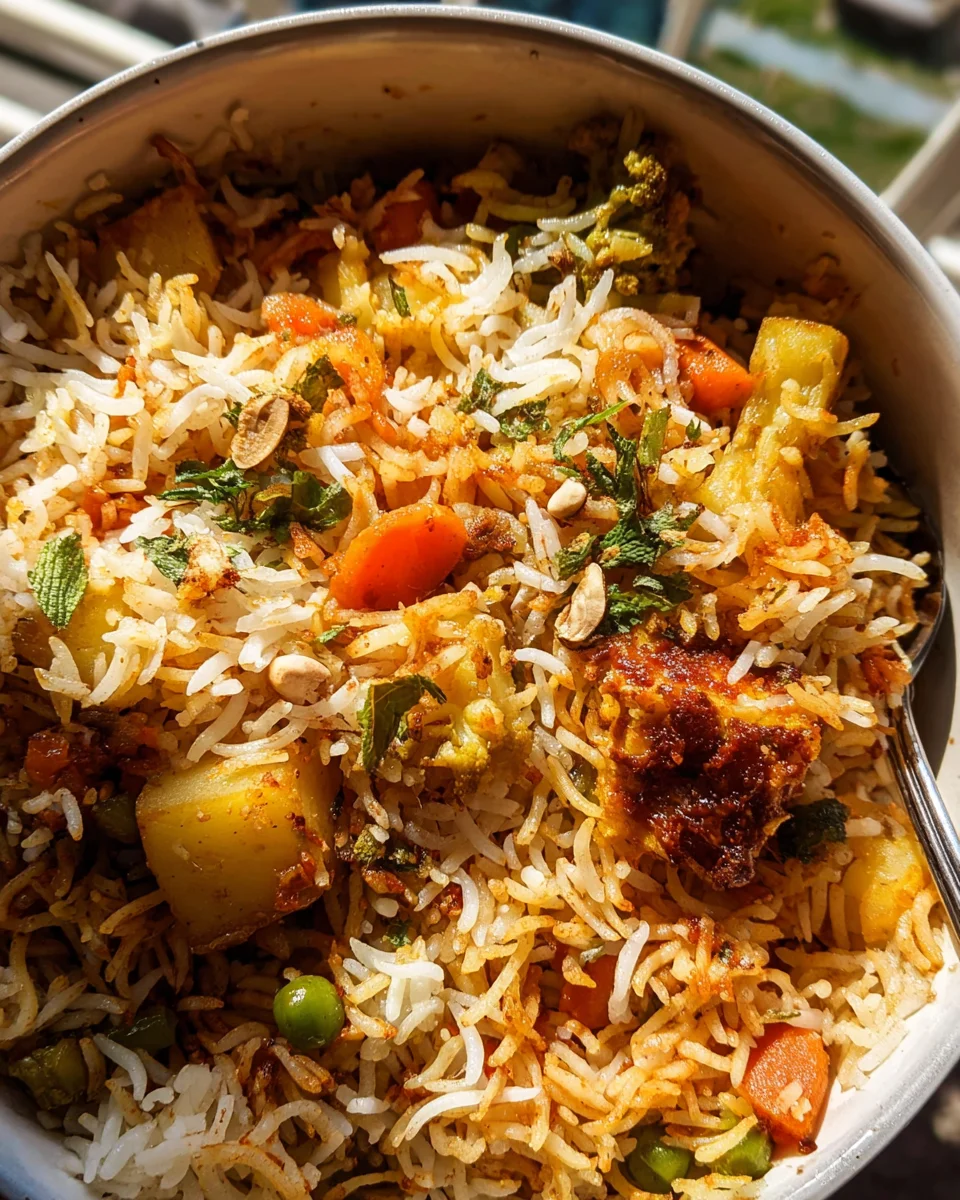
Storage & Reheating Instructions
Refrigerator Storage
- Store leftover Restaurant Style Vegetable Biryani in an airtight container.
- It will keep well in the fridge for up to 3 days.
Freezing Restaurant Style Vegetable Biryani
- Freeze in portions using freezer-safe containers or bags.
- It can be stored for up to 2 months.
Reheating Restaurant Style Vegetable Biryani
- Oven: Preheat oven to 350°F (175°C) and cover with foil. Heat for about 15-20 minutes until warmed through.
- Microwave: Place in a microwave-safe bowl, add a splash of water, cover, and heat on medium power for 3-5 minutes.
- Stovetop: Heat on low in a skillet with a few drops of water, stirring occasionally until warmed.
Frequently Asked Questions
Here are some common questions about making Restaurant Style Vegetable Biryani.
How do I make Restaurant Style Vegetable Biryani vegetarian?
You can easily make it vegetarian by ensuring all ingredients, especially yogurt and ghee, are plant-based or suitable for vegetarians.
Can I use brown rice instead of basmati?
Yes, you can use brown rice; however, you will need to adjust the cooking time since brown rice takes longer to cook compared to basmati.
What vegetables work best in Restaurant Style Vegetable Biryani?
Common choices include potatoes, carrots, peas, and cauliflower. Feel free to mix in seasonal vegetables based on your preference.
How do I enhance the flavor of my biryani?
Incorporate fresh herbs like cilantro and mint along with rose or kewra water for added aroma and depth of flavor.
Final Thoughts
This Restaurant Style Vegetable Biryani is not only aromatic but also versatile enough for any occasion. You can customize it by adding your favorite veggies or adjusting spices according to your taste. Try this recipe today and enjoy a hearty meal that delights everyone!
Did You Enjoy Making This Recipe? Please rate this recipe with ⭐⭐⭐⭐⭐ or leave a comment.
📖 Recipe Card
Print
Restaurant Style Vegetable Biryani
- Total Time: 45 minutes
- Yield: Serves 4
Description
Aromatic and flavorful, Restaurant Style Vegetable Biryani is a delightful dish that brings the essence of Indian cuisine to your table. This one-pot wonder features a vibrant mix of basmati rice, colorful vegetables, aromatic spices, and rich nuts, offering an explosion of flavors in every bite. Perfectly suited for family dinners, festive occasions, or cozy nights at home, this biryani is not just a meal but an experience that will impress everyone.
Ingredients
- 1 cup basmati rice
- 2 medium red onions
- 1 small potato
- 1/2 cup cauliflower florets
- 1 medium carrot
- 5–6 green beans
- 1/3 cup plain yogurt
- Spices: cardamom, cloves, cumin seeds, cinnamon stick, bay leaf
- Fresh herbs: cilantro and mint
- Ghee and oil
Instructions
- Rinse and soak basmati rice in water for 30 minutes; drain.
- In a heavy-bottomed pot, heat ghee and sauté half the sliced onions until golden brown. Add crushed ginger, garlic, and green chilies until fragrant.
- Stir in cubed potatoes, cauliflower florets, carrots, and green beans; sauté for about 5–7 minutes until slightly tender.
- Mix in spices (cumin seeds, cinnamon stick, bay leaf) along with cashews and yogurt; combine well.
- Layer the drained rice over the vegetables gently. Pour saffron-infused milk and remaining ghee on top.
- Cover tightly and cook on low heat for 25–30 minutes until rice is fluffy; let rest for another 10 minutes before serving.
- Prep Time: 15 minutes
- Cook Time: 30 minutes
- Category: Main
- Method: One-pot cooking
- Cuisine: Indian
Nutrition
- Serving Size: 1 serving
- Calories: 320
- Sugar: 3g
- Sodium: 400mg
- Fat: 12g
- Saturated Fat: 6g
- Unsaturated Fat: 4g
- Trans Fat: 0g
- Carbohydrates: 48g
- Fiber: 4g
- Protein: 8g
- Cholesterol: 20mg

